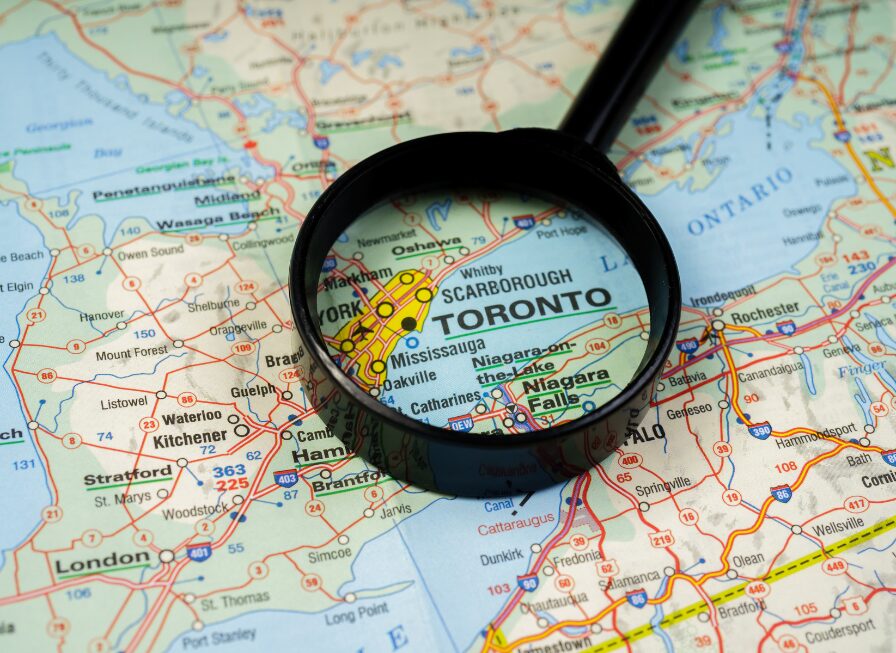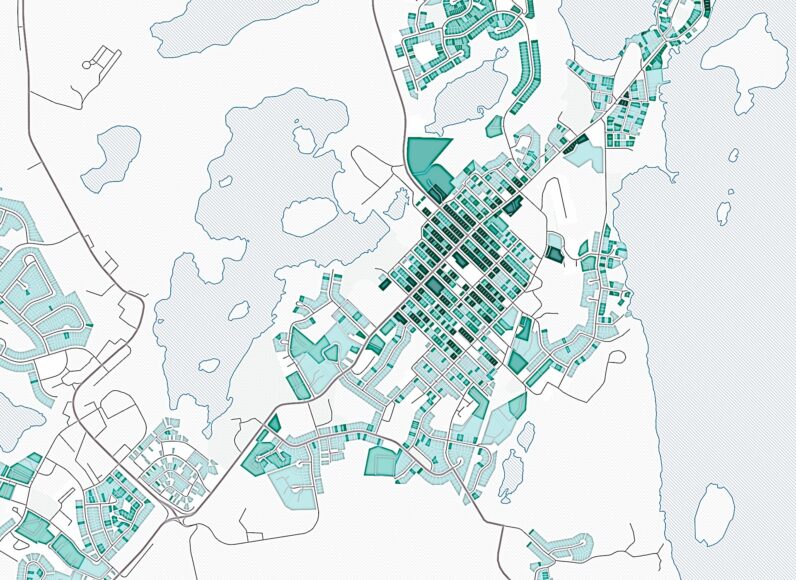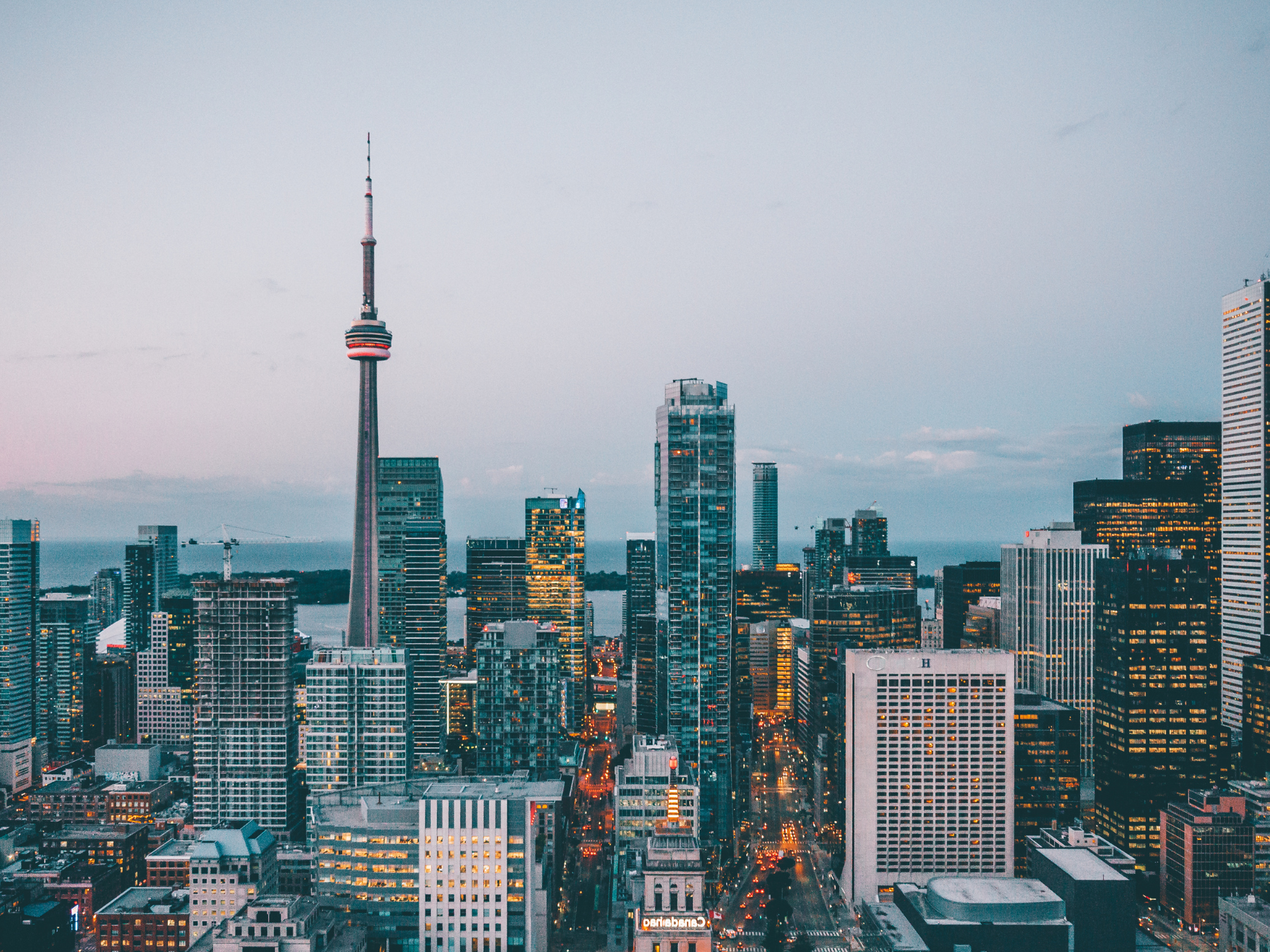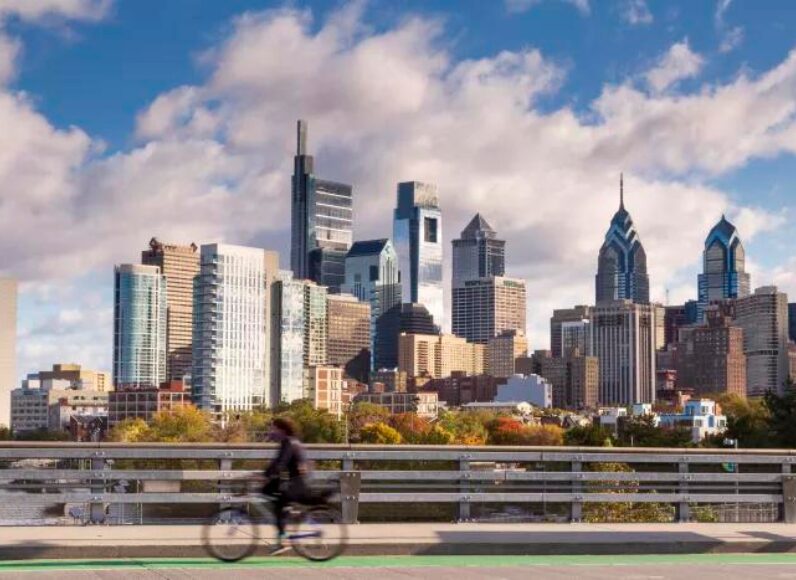Introduction
Toronto’s downtown has come back from its lowest economic indicator during the pandemic but remains some 30 percent below where it was in 2019, according to the latest edition of the Downtown Recovery Index developed by our colleagues at the University of Toronto’s School of Cities. This puts Toronto’s downtown 45th of the 66 North American downtowns the index covers.
To get a better sense of how Toronto’s downtown stacks up globally, we examined detailed data from a survey of 26,000 people in 53 cities conducted by the research division of Gensler, the global architecture, design, and planning firm. These data were made available to us by Sofia Song, the global leader of cities research at the Gensler Research Institute. Since many cities have multiple downtowns, it covered 92 downtown areas, including three in Canada, 38 in the U.S., 12 in Europe, 20 in Asia, nine in Latin America, three in Africa, and seven in the Middle East. Two areas of Toronto were included: Toronto’s long established downtown business district (Downtown Toronto), and Midtown Toronto.
For our assessment of Toronto, we used data from two key survey questions. The first asked respondents to rate their downtown areas as places to work, live, raise a family, and engage in shopping, dining, and entertainment activities. The second asked respondents about changes or improvements that would make them visit downtown more often.
A tale of two districts
The first big takeaway from the data is that Toronto is a tale of two districts: Midtown Toronto bests Downtown Toronto as a place to work, shop, live, and go out to have fun. The first chart below summarizes the key data. For instance, Downtown Toronto ranked 60th globally as a place to work, while Midtown Toronto ranked 16th globally and first among North American cities. Downtown Toronto trailed even further, placing 65th globally as a place to discover new things, compared to Midtown Toronto which ranked second globally and tied for first place in North America. Downtown Toronto ranked 76th globally as a place to live, while Midtown Toronto ranked 15th globally and tied for first place In North America on this score.
| Downtown Toronto | Midtown Toronto | |||||
| Activity | Percent | North American rank (out of 41) | Global rank (out of 91) | Percent | North American rank (out of 41) | Global rank (out of 91) |
| Work | 72% | 20 | 60 | 85% | 1 | 16 |
| Place to live | 46% | 34 | 76 | 75% | 1 | 15 |
| Shop | 76% | 11 | 43 | 79% | 4 | 31 |
| Have fun | 71% | 27 | 60 | 86% | 1 | 7 |
| See performances/exhibits | 73% | 27 | 49 | 81% | 10 | 16 |
| Dine/eat out | 79% | 30 | 64 | 89% | 2 | 6 |
| Discover new things | 69% | 32 | 65 | 87% | 1 | 2 |
| Meet people | 60% | 33 | 77 | 79% | 1 | 17 |
| Start a family | 16% | 41 | 92 | 44% | 7 | 42 |
| Raise children | 19% | 39 | 89 | 42% | 11 | 46 |
But both districts lagged as places to start families and raise children. Downtown Toronto ranked dead last globally, with just 16 percent of respondents saying it is a good or excellent place to start a family. It ranked third to last globally as place to raise children. Midtown Toronto ranked 42nd globally as a place to start a family and 46th as a place to raise children. This may be because Torontonians equate a good place to raise children with a single-family home – the Canadian dream.
What would bring people back downtown?
So, what would it take to bring more people back downtown? The second table below shows how both districts – Downtown and Midtown – stack up based on the factors that survey respondents said would make them visit downtown more often.
| Downtown Toronto | Midtown Toronto | |||||||
| Area of improvement | Percent | Importance* | North American rank (out of 41) | Global rank (out of 91) | Percent | Importance* | North American rank (out of 41) | Global rank (out of 91) |
| Safer | 28% | 1 | 26 | 31 | 35% | 1 | 18 | 20 |
| More reasons to explore and walk around | 25% | 2 | 6 | 9 | 21% | 3 | 20 | 42 |
| More parking | 25% | 3 | 36 | 45 | 27% | 2 | 28 | 33 |
| More parks | 21% | 4 | 2 | 12 | 16% | 4 | 4 | 34 |
| More cultural venues/events | 15% | 5 | 22 | 66 | 16% | 4 | 19 | 59 |
| More restaurants, cafes, bars | 14% | 6 | 35 | 82 | 15% | 7 | 34 | 78 |
| More places/activities for families | 13% | 7 | 26 | 71 | 13% | 9 | 25 | 70 |
| Opportunities for memorable experiences | 13% | 7 | 14 | 51 | 8% | 13 | 37 | 87 |
| More outdoor dining | 13% | 9 | 15 | 46 | 13% | 9 | 12 | 42 |
| Better variety of stores | 12% | 10 | 35 | 83 | 11% | 11 | 38 | 87 |
| Better walkability | 12% | 10 | 26 | 64 | 11% | 11 | 29 | 69 |
| Better/more frequent transport links | 11% | 12 | 18 | 63 | 15% | 7 | 5 | 35 |
| Better accessibility | 9% | 13 | 37 | 85 | 16% | 4 | 10 | 29 |
| Better places to work | 8% | 14 | 24 | 72 | 6% | 14 | 30 | 79 |
| More opportunities for sports, recreation, exercise | 7% | 15 | 34 | 82 | 6% | 14 | 35 | 83 |
Safety was the top ranked concern for Torontonians. 26 percent of survey respondents said they would visit downtown Toronto more often if it were safer and 35 percent said the same for Midtown. Globally, over half the respondents in six metros said they would spend more time in their city’s downtown if it were safer.
Perhaps surprisingly, given all the emphasis placed on bringing workers back downtown, having better places to work did not weigh heavily in Torontonians’ thinking. Just 8 percent said they would go downtown more often if there were better places to work. It was even less of a concern for Midtown, with 6 percent of respondents citing better places to work as a key factor that would bring them back to the neighbourhood.
Urbanists might blanch, but parking continues to matter a great deal to Torontonians. A quarter of Torontonians surveyed said they would spend more time downtown if there were more parking, and 27 percent said the same about Midtown. On the flip side, better mass transit connections seem to matter far less.Just 11 percent of Torontonians said that they would go downtown more often if there were better transport links, while 5 percent said so for Midtown. An even smaller share of Torontonians (just 9 percent) said that they would go downtown more often if there was better accessibility.
That said, two things that matter more to Torontonians are parks and reasons to explore and walk around. About a quarter of those surveyed said they would visit downtown more often if there were more reasons to explore and walk around and a fifth of respondents said this about Midtown.
What it all means
First and foremost, Toronto’s Downtown business district lags other downtowns as a place to live, work, and play. It consistently ranked in the bottom half of global cities across all dimensions. Downtown Toronto ranked in the bottom 10th across two dimensions and in the bottom half in nine. Only one dimension – shopping – ranked in the upper half globally. It did especially poorly as a place to start a family and raise kids, ranking 92nd and 89th globally.
This latter finding is especially concerning because, across the survey as a whole, families with children rated their downtown experience the highest of any group, with 93 percent of families with children under the age of six living downtown saying their downtown offered a great experience, and 85 percent of families with children over the age of six saying so (compared to 70 percent of those living alone). Toronto’s downtown must make a concerted effort to become a better place to live – not just for young singles and empty-nesters who have driven the revival of Toronto and other North American downtowns over the past several decades, but for families with children.
The contrast between Toronto’s two districts – Downtown and Midtown – is striking. Across virtually every category, Midtown did appreciably better. It ranked first among North American downtowns for five of the ten activities, and the upper half globally on nine dimensions. That said, Midtown also ranked relatively poorly as a place to start a family and raise children, coming in 42nd and 46th respectively. The single most important thing that Toronto can do to bring people back to Downtown and Midtown is to make them more family friendly.
As for what can be done to bring people back downtown, safety is far and away the most important concern for Torontonians. This is in line with the survey results broadly. Nearly two-thirds (64%) of all survey respondents reported that their sense of safety downtown had declined over the past year.
It is also important to recognize the change in the nature and organization of work brought by the shift to remote work. Successful downtowns are geared to more flexible ways of working. The survey finds that hybrid workers continue to visit downtown: more than two thirds (66%) of downtown hybrid workers visit their downtowns on some of the days they work remotely, and 58% of downtown hybrid employees work from third locations in their downtowns, such as cafes, restaurants and coworking spaces. Downtown workers want more than just a space to work – they want outdoor recreation, shopping, and culture. According to the survey, nearly nine in ten of downtown hybrid workers (88%) and nearly three-quarters (73%) of non-hybrid downtown workers would visit downtown more often if they offered more of these activities.
The survey offers some general insights on what makes a great downtown. Overall, it found that work is no longer the number one reason people visit downtowns. Shopping, dining out, socializing, or simply hanging out all rate higher. The best or most highly rated downtowns offer a cluster of great experiences. The factors did not vary significantly for residents, workers, or local visitors: while the ordering was different, the qualities that were most valued were being a place that is attractive and fun to visit as well as a great place to live and work.
This is because visitors have become increasingly critical to the future of downtown. More than half (56%) of respondents across the globe only experience their downtowns as visitors, according to the survey. This is in line with a recent study of 26 U.S. downtowns which finds that visitors comprise more than 60 percent of all downtown activity, compared to 27 percent for workers and 11 percent for residents.
The Gensler survey finds that the ability to have fun is among the attributes that “most strongly predict a great downtown experience.” Downtown Toronto rates comparatively poorly as a place to have fun, well behind the downtowns of cities like Miami, Los Angeles, Chicago, Atlanta, Austin, Dallas, Houston, and Detroit. “Downtowns must deliver opportunities for fun, discovery, and beauty to appeal to a broad audience of city dwellers,” the survey finds. “Downtowns that prioritize informal gathering spaces, promote walkability, and pursue activation through community amenities will create an authentic sense of place for downtown residents, employees, and local visitors.”
Downtowns can no longer thrive as work-oriented Central Business Districts. They must become safer and more balanced places to live, raise children, play – and especially to visit and connect. With their central locations, well-developed transit and transport connections, and high densities of cultural and entertainment venues and amenities, they are very well placed to do this.








